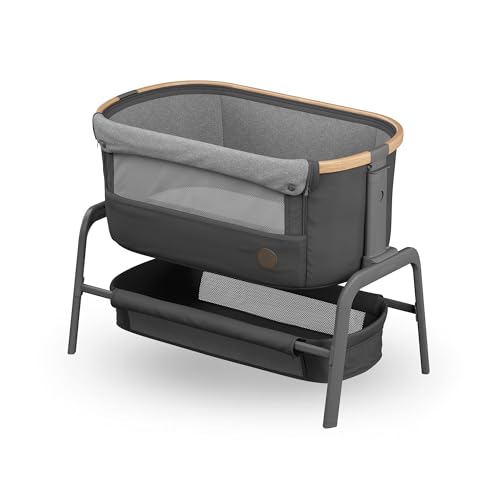Five Lessons You Can Learn From Bedside Cosleeper
Bedside Cosleeper A bedside cosleeper is a bassinet which connects to the side of your adult bed. It's safe, so long as you adhere to the CSPC safety guidelines for infant sleep spaces. These guidelines are similar to crib bedding standards. You can learn more about these guidelines here. When selecting a bedside sleep device security, comfort and convenience are the main aspects to take into consideration. Safety Many new parents and expecting mothers have embraced cosleeping, also known as bed-sharing, as per the American Academy of Pediatrics recommendation that infants should sleep in the same bedroom as their parents. The Academy recommends that room-sharing with a baby is safer than sleeping in the same bed as a parent because it reduces the risk of Sudden Unexpected Infant Death (SIDS). The AAP does not advocate bed-sharing however, it does suggest that sleeping on an individual sleeping surface is a good option to lower the risk of SIDS. The creation of the bedside crib was essential for a number of families. A bedside cosleeper can be described as a crib-like sleeper that attaches to an adult bed frame. The bedside cosleeper enables parents to keep an eye on their child, and it gives parents the freedom of sleeping in a bed while keeping their child close to them. The best cosleepers are built with high-quality materials and adhere to stringent safety standards. Check for the Juvenile Products Manufacturers Association (JPMA) stamp of approval, which confirms rigorous product testing and quality controls, to ensure your child's safe cosleeping experience. The safety of a cosleeper is contingent on a variety of factors. This includes the way it's put in place and secured onto the mattress of the parent. If the bedside cosleeper is not connected to the bed of the parent in a way that prevents the gaps and spaces in which an infant could be trapped, it could be an hazard of suffocation. It is crucial that the attachment system of a bedside sleeper be examined to determine if it is able to withstand the forces that may be applied in the use of it, like the parent rolling on and off of the sleeper or a 25-lb. horizontal force applied to the attachment system or to the corners of the bedside cosleeper. The voluntary standard for bedside sleepers incorporates by reference to the federal consumer safety standard for products such as bassinets and cradles (16 CFR part 1218), which includes requirements for performance for enclosed openings made of fabric. The standard's requirements for mandatory compliance deal with the risk of neck and head entrapment by requiring that, after the application, release 50 lbs. The standard also requires that following the application and release of a 50-lb. It is not permitted to create a gap greater than 1.0 in. Only read-only copies of the standard can be found at ASTM's electronic Reading Room. Convenience While many parents have avoided cosleeping because of fears of suffocation SIDS or the “Ferberization” process that forces children to be in a room by themselves Anthropologists have noted that the majority of mammals and primates as well as those in non-Western societies, regularly cosleep. This is because babies are soothed when they hear their mother's voice, and they also learn to self-soothe. The best bedside sleepers have an innovative design that is attached on the side of any mattress and pivots so that you can access it easily for diaper changes or feedings during the middle of the night. Find a model with adjustable feet, which retract to accommodate various mattress sizes. It should also include an ample storage area to store all the baby's necessities. Choose a bedside crib that will fit the standard crib bedding, so that it will be safe to use as your child grows. bedside co sleeper cot may also want to look into a convertible model that could transform into a play area or a more deep bassinet for a long time of use, and folds up easily to travel. Portability A bedside cosleeper that has wheels or a lightweight base is easier to move than one that has a heavy wooden frame or a substantial base. The babybay bedside sleeper HALO bassiNest essencetia, and Snoo Smart Sleeper are all portable. small bedside cot come with adjustable feet that can be retracted to accommodate platform mattresses; legs that fold inwards to provide maximum access to the mattress; and 100% mesh sidewalls to allow ventilation without covering the baby's mouth or nose.  The Arm's Reach ClearVue is another popular option that adjusts in 1” increments to fit most adult beds. It can also be used as an portable bassinet. It also pivots to allow for quick access to the baby so that you can comfort her, nurse her, or monitor them during the night.
The Arm's Reach ClearVue is another popular option that adjusts in 1” increments to fit most adult beds. It can also be used as an portable bassinet. It also pivots to allow for quick access to the baby so that you can comfort her, nurse her, or monitor them during the night.